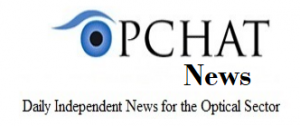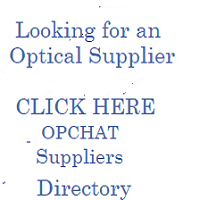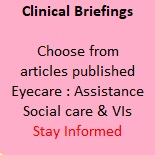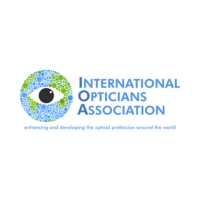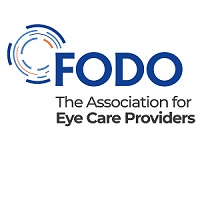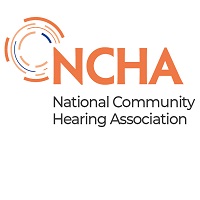Education
Editor calls for greater collaboration between professions.
Bridging the Gap: Enhancing Collaboration Between Optometrists, CLO’s and Ophthalmologists for Improved Vision Care
A discussion document for Opchat News written by Bob Hutchinson, Editor and Associate Board Member of CAIPE, (Centre for Advanced Inter professional Education) and Past President or GP and Primary Healthcare Section of Royal Society of Medicine
Introduction
In the ever-evolving landscape of healthcare, the need to address the increasing demand for vision care services is becoming more urgent. With ophthalmology departments facing challenges such as full capacity and prolonged waiting times, there is a critical necessity to explore innovative solutions to enhance collaboration between primary care services, specifically community optical practices and optometrists. Breaking down the existing resistance between these professions is crucial for ensuring timely and effective vision care for individuals with visual impairments.
Over a year ago Opchat News widened its own scope of reporting to include ophthalmology in an attempt to inform optometrists of the desire of many ophthalmologists to improve collaboration and understanding, amongst both professions.
Understanding the Resistance:
The resistance between the optical profession and ophthalmologists stems from historical professional boundaries, differences in education and training, and variations in scopes of practice. To address this resistance, it is essential to recognize the value that each profession brings to the table and highlight the common goal of improving patient outcomes.
Regulatory Collaboration
One potential avenue to break the impasse is to encourage regulators from each profession to collaborate. Regulatory bodies can play a pivotal role in fostering a collaborative environment by facilitating communication, identifying areas of shared interest, and developing guidelines that promote interdisciplinary cooperation. Establishing joint committees or task forces comprising representatives from each profession can be an effective strategy to address regulatory barriers and promote a unified approach to vision care.
CAIPE has proved especially in the medical fields that having a required commitment from regulatory bodies written in the modules to learn together proves highly successful.
Inter-Professional Education:
Inter-professional education (IPE) can serve as a powerful tool to bridge the gap between optometrists, and ophthalmologists. By creating educational programs that facilitate collaboration and mutual understanding, professionals from different fields can gain insights into each other’s expertise, leading to more effective teamwork. IPE can be incorporated into the training curriculum of each profession, fostering a culture of collaboration from the early stages of professional development.
Promoting a Team-Based Approach
Encouraging a team-based approach to vision care is crucial for overcoming resistance and improving patient outcomes. Establishing interdisciplinary clinics or practices where optometrists, and ophthalmologists work together can create a seamless continuum of care for individuals with vision problems. This approach ensures that patients receive comprehensive and coordinated services, reducing waiting times and preventing the loss of visual acuity.
An extension of this expansion into including Social Care sounds like a pipe dream but is essential for the improvement of services to those with visual impairment or learning difficulties or as often the case both.
Technology Integration
Embracing technology can further enhance collaboration between primary care services and ophthalmology departments. Telemedicine platforms can facilitate virtual consultations, allowing optometrists to consult with ophthalmologists remotely. This not only improves accessibility to expert advice but also streamlines the referral process, reducing waiting times and ensuring timely interventions.
Conclusion
Addressing the urgent need for enhanced collaboration between both professions requires a multi-faceted approach.
Regulatory bodies must play a proactive role in fostering collaboration, while inter-professional education can break down the barriers that contribute to resistance.
Promoting a team-based approach to vision care and integrating technology are essential components of a comprehensive strategy to ensure timely and effective services for individuals with visual impairments.
By working together, these professions can create a unified front that prioritizes patient well-being and addresses the pressing challenges in vision care.
I hope my contribution will stimulate a discussion amongst opinion formers in both professions and the collaboration at 100% Optical/ophthalmology at this year’s event will burgeon into greater things to come.
Bob Hutchinson is attending 100% each day as PHN are Media Partners for the 10th Year and happy to meet up with any delegates attending.

